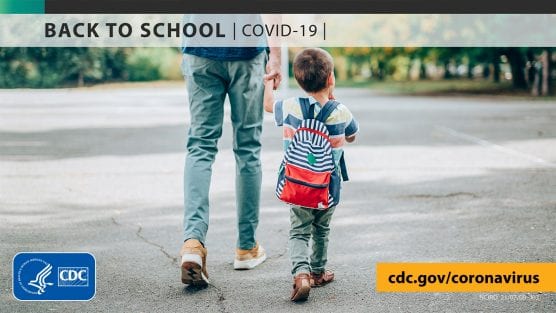The Centers for Disease Control and Prevention on Friday issued updated K-12 school guidance that highlights mitigation strategies for schools to achieve full in-person instruction.
California will align with this guidance by implementing the multiple mitigation strategies of continued mask guidance and robust testing capacity, while not recommending physical distancing due to the obstacles it would present to California schools’ full reopening.
According to today’s CDC guidance:
“When it is not possible to maintain a physical distance of at least 3 feet, such as when schools cannot fully re-open while maintaining these distances, it is especially important to layer multiple other prevention strategies, such as indoor masking.”
In accordance with CDC’s guidance, and due to the fact that many of California’s school facilities can’t accommodate physical distancing, California will layer multiple other prevention strategies, including:
– Continued masking guidance: California will continue to require that masks be worn indoors in school settings, which also will ensure that all kids are treated the same.
– Robust testing program: Every California school has access to free testing through the robust state testing program for schools.
“We applaud the CDC’s commitment to ensuring that schools are fully, safely opened for in-person instruction. Given California’s science-based approach and the fact that the state’s school facilities can’t accommodate physical distancing, we will align with the CDC by implementing multiple layers of mitigation strategies, including continued masking and robust testing capacity,” said California Health & Human Services Agency Secretary Dr. Mark Ghaly. “Masking is a simple and effective intervention that does not interfere with offering full in-person instruction. At the outset of the new year, students should be able to walk into school without worrying about whether they will feel different or singled out for being vaccinated or unvaccinated – treating all kids the same will support a calm and supportive school environment.”
“There’s no substitute for in-person instruction, and today’s CDC guidance clearly reinforces that as a top priority, issuing recommendations for how schools throughout the country can get there. Here in California, we’ll get there through continued masking and robust testing capacity,” said Dr. Tomás Aragón, Director of the California Department of Public Health and State Public Health Officer. “The CDC issued a full commitment, with which California agrees, to full in-person instruction for students in the coming school year. CPDH is carefully reviewing the CDC guidance and plans to release state K-12 school guidance on Monday, July 12.”
The guidance will build on multiple state initiatives to ensure schools are prepared to fully, safely reopen:
– Historic Budget Investments: In March, Governor Newsom signed into law a $6.6 billion investment in education to safely reopen schools and to address learning loss, especially for students most heavily impacted and school districts with concentrations of low-income and homeless students. According to the most recent data, essentially all schools in California are planning to be fully open for the upcoming school year.
– In-Person Summer Learning: This summer, students in 88% of school districts are already receiving learning acceleration (e.g., high-dose tutoring), enrichment, and mental health services, based on $4.6 billion appropriated in early March and strong encouragement from leaders throughout the administration.
– Vaccinating Young People: In early May, California launched a multi-faceted statewide campaign to drive vaccinations of school-aged youth ahead of the next school year, including school-based pop-up clinics throughout the state, schools serving directly as providers, and both earned and paid media to educate youth and families.
– Safety and Family Engagement: In early June, CDPH launched a family engagement campaign to address the concerns of students and parents reluctant to return to in-person instruction – especially Latinx, African American, and AAPI parents in communities disproportionately impacted by the pandemic. Investments include a campaign to reach parents ($1 million), build on-the-ground local collaborations between local public health departments ($10 million) and county offices of education ($10 million), and provide ongoing statewide technical assistance and encourage two-way communication through enhanced technology ($4 million).
– COVID-19 Testing Supports: California has a robust testing infrastructure, particularly for schools, with the capacity to offer free PCR or antigen testing to every school in the state. Innovations being piloted include at-home testing, pooled testing (decreases collection time), and on-site molecular (similar to PCR) testing, among others. To learn more, go to the CDPH Testing Task Force for schools website, or fill out a form here.
Like this:
Like Loading...
Related





 Tweet This
Tweet This Facebook
Facebook Digg This
Digg This Bookmark
Bookmark Stumble
Stumble RSS
RSS


























REAL NAMES ONLY: All posters must use their real individual or business name. This applies equally to Twitter account holders who use a nickname.
0 Comments
You can be the first one to leave a comment.